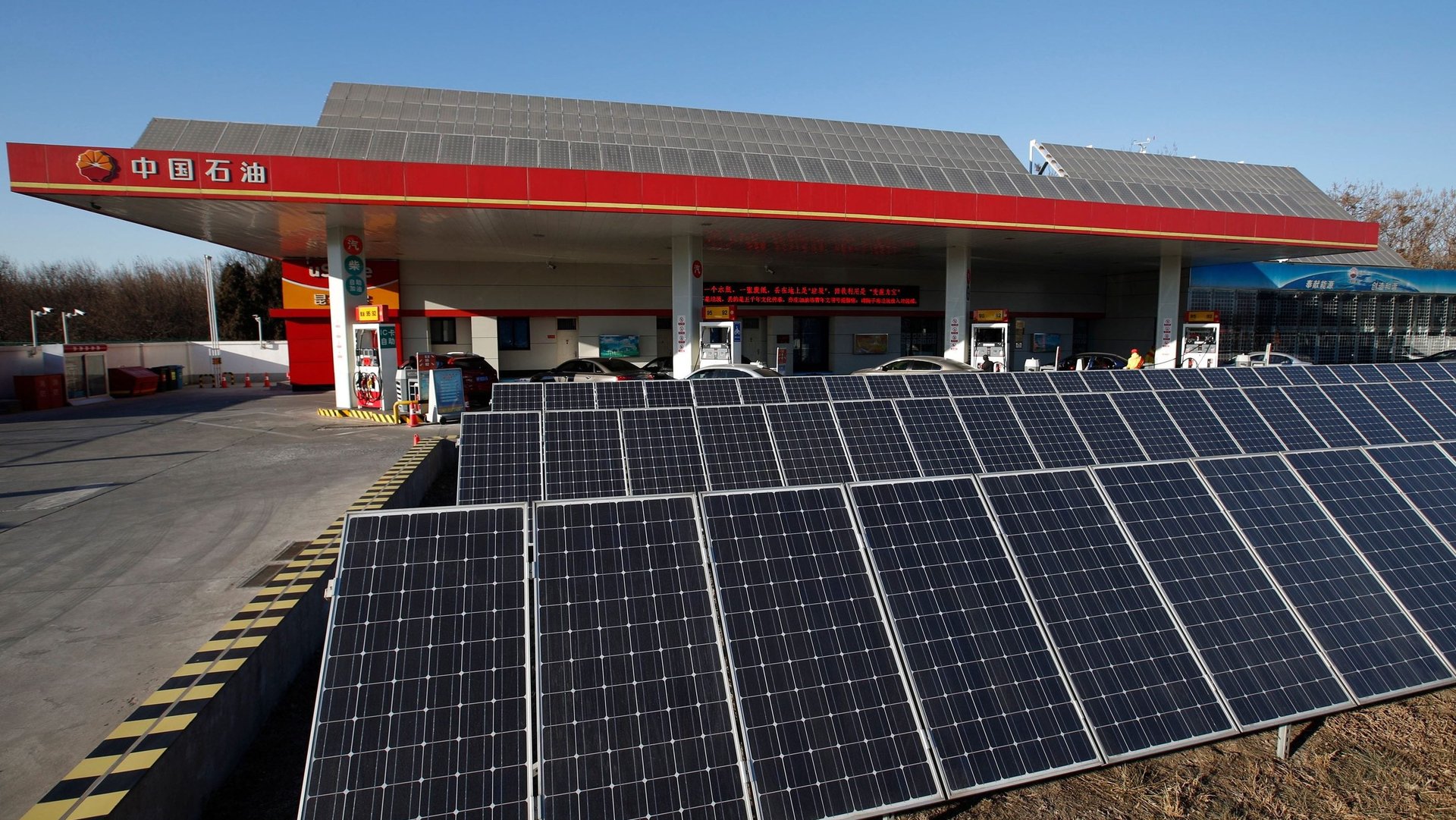For every $1 the US put into adding renewable energy last year, China put in $3
China, the world’s largest emitter of greenhouse gases, is determined to rebalance its energy mix, and incorporate more clean energy. That determination is reflected in the money it put into renewable energy last year, dwarfing spending by the next biggest investor, the US.


China, the world’s largest emitter of greenhouse gases, is determined to rebalance its energy mix, and incorporate more clean energy. That determination is reflected in the money it put into renewable energy last year, dwarfing spending by the next biggest investor, the US.
Last year nearly half of the world’s new renewable energy investment of $279.8 billion (pdf, p.11) came from China, according to a report published April 5 by Bloomberg New Energy Finance, and the sustainable energy finance center run by the United Nations Environment Program and the Frankfurt School of Finance and Management. China’s investment in renewable energy—excluding large hydro projects—rose 30% compared with 2016, and was more than three times of that of the US, whose investment in the sector dropped 6% from 2016 to $40.5 billion last year.
China first overtook the US in new renewable energy investment in 2009 (p.14), but the gap between the two only amounted to $14 billion at that time.
Together, the “big three” developing economies, China, India, and Brazil, accounted for a record 63% of global investment in renewable energy in 2017, noted the report (p.20). Developing countries first surpassed developed country investment in renewables in 2015, but fell back in 2016.
More than two-thirds of China’s total investment in clean energy went into solar, adding some 53GW of capacity, an amount capable of powering more than 38 million homes. That was followed by wind, on which China spent nearly one-third (p.11) of its investments.
China has been aggressively adopting renewable energy in recent years to deal with its airpocalypse-like pollution. It became the world’s largest solar-energy producer in 2016, boosting its photovoltaic capacity to some 78 GW, in some cases turning defunct coal mines into the world’s largest floating solar farms. Some projects, however, are creating worries over a growing subsidy burden, noted the report.
Overall, renewable energies now make up around 20 percent (link in Chinese) of China’s energy consumption, while coal accounts for over 60 percent.
Still, around 26% of the country’s total electricity production (link in Chinese) came from renewables, which is better than the 12% figure for the world as a whole. “This shows where we are heading, but the fact that renewables altogether are still far from providing the majority of electricity means that we still have a long way to go,” noted Nils Stieglitz, president of the Frankfurt School of Finance & Management, in the report.